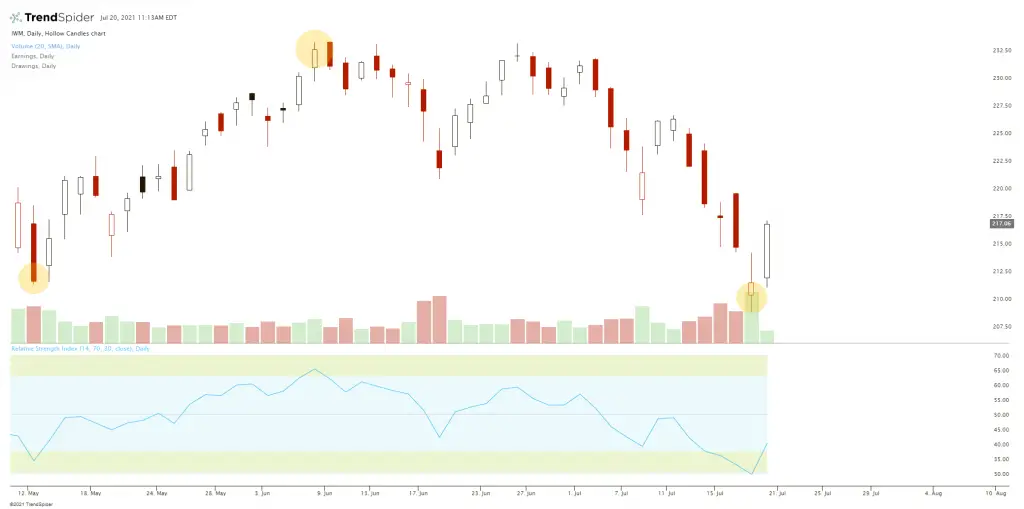The RSI indicator buy and sell signals are based on oversold and overbought conditions on a stock chart. The RSI is a measurement of price moving too far and too fast in one direction and as the RSI gets extended farther from the 50 RSI middle line the probability of a reversion to that mean increases.
Think of the RSI as a risk/reward detector and the reward diminishes for long positions as a stock chart reaches the 70 RSI zone and the short sellers can see less potential reward as the RSI moves near the 30 RSI zone. The odds of successful dip buys increases as a chart reaches near the 30 RSI and short selling has a greater chance of success near the 70 RSI.
The RSI works best in range bound markets for identifying the boundaries of potential support and resistance. In a strongly trending market a break above the 70 RSI can be a short term momentum signal to the upside and a breakdown below the 30 RSI can signal the start of a deeper downtrend in the short term. As a trend continuation indicator the breaking of the 30 or 70 RSI boundaries can signal a potential parabolic move beginning that can’t be contained in the near term. Approximately 95% of price action on a chart tends to happen inside the bounds of the 70/30 RSI resistance and support levels.
In this below stock chart context the RSI is set at a 14-day parameter and on a daily chart. An RSI can be used on all timeframes but should be looked at historically for a reference point on how it should work on a specific chart in a trading time period based on historical price action behavior. Some stock charts tend to go parabolic, some tend to trend to those boundaries, and others can go sideways for long periods of time.
